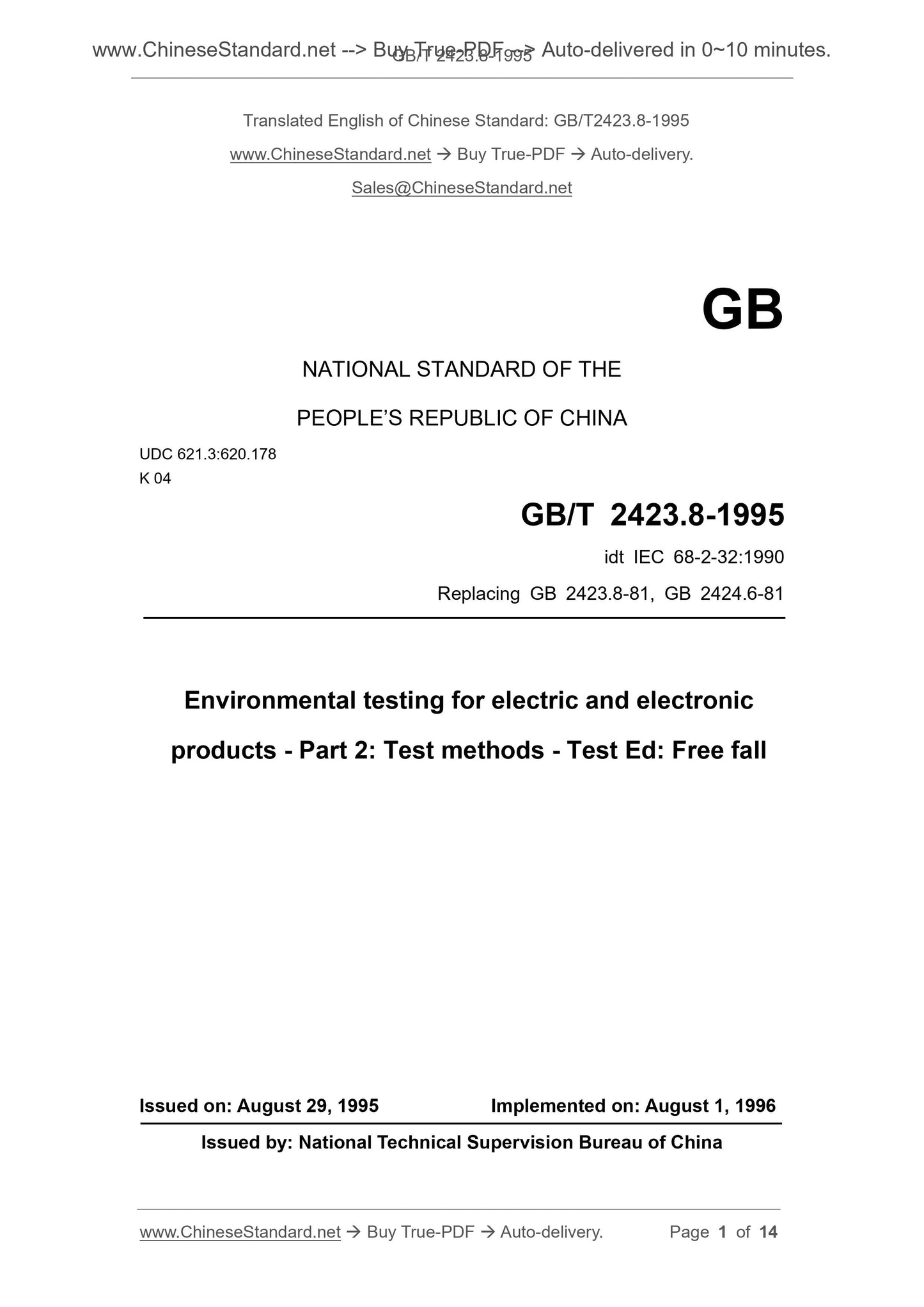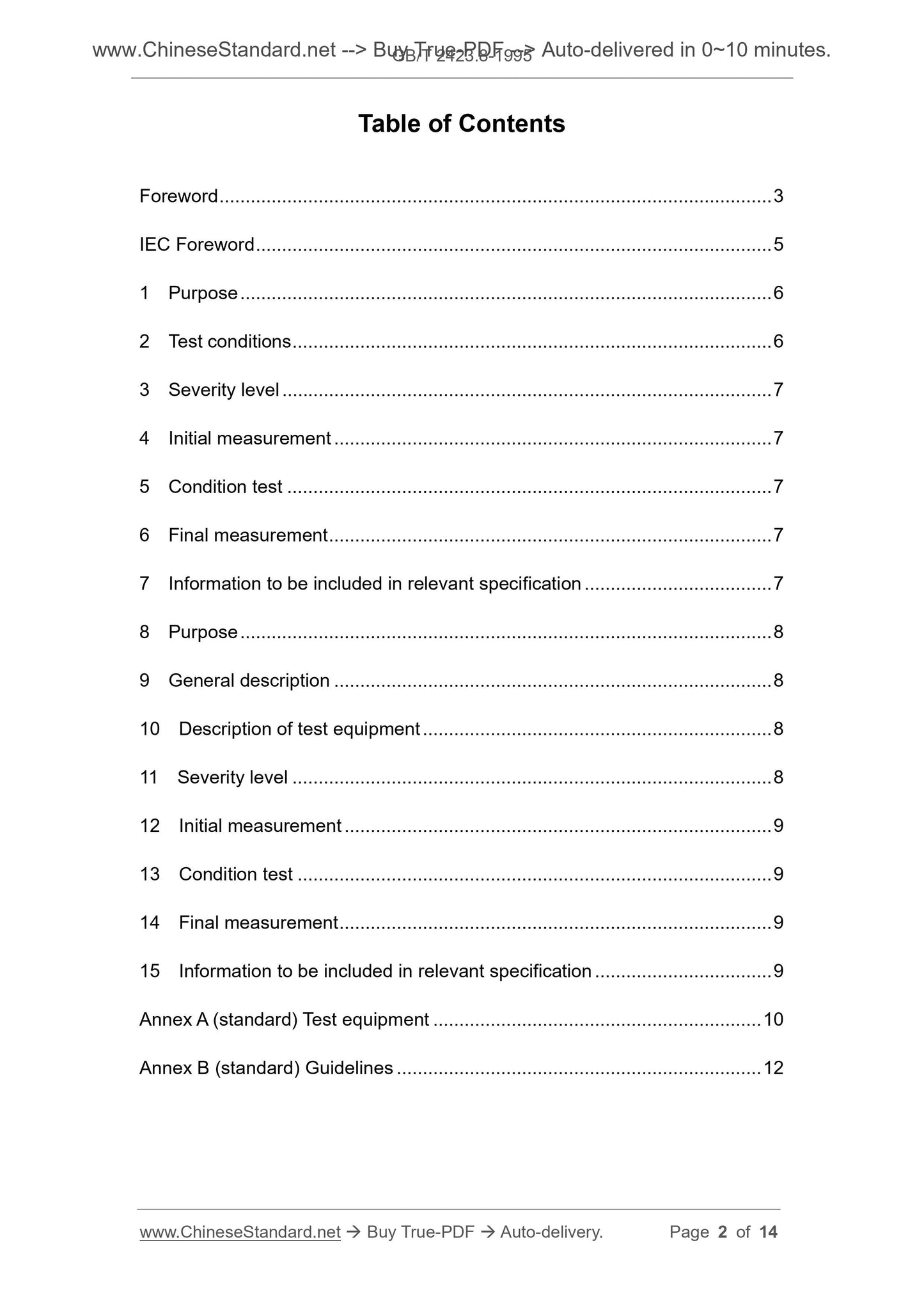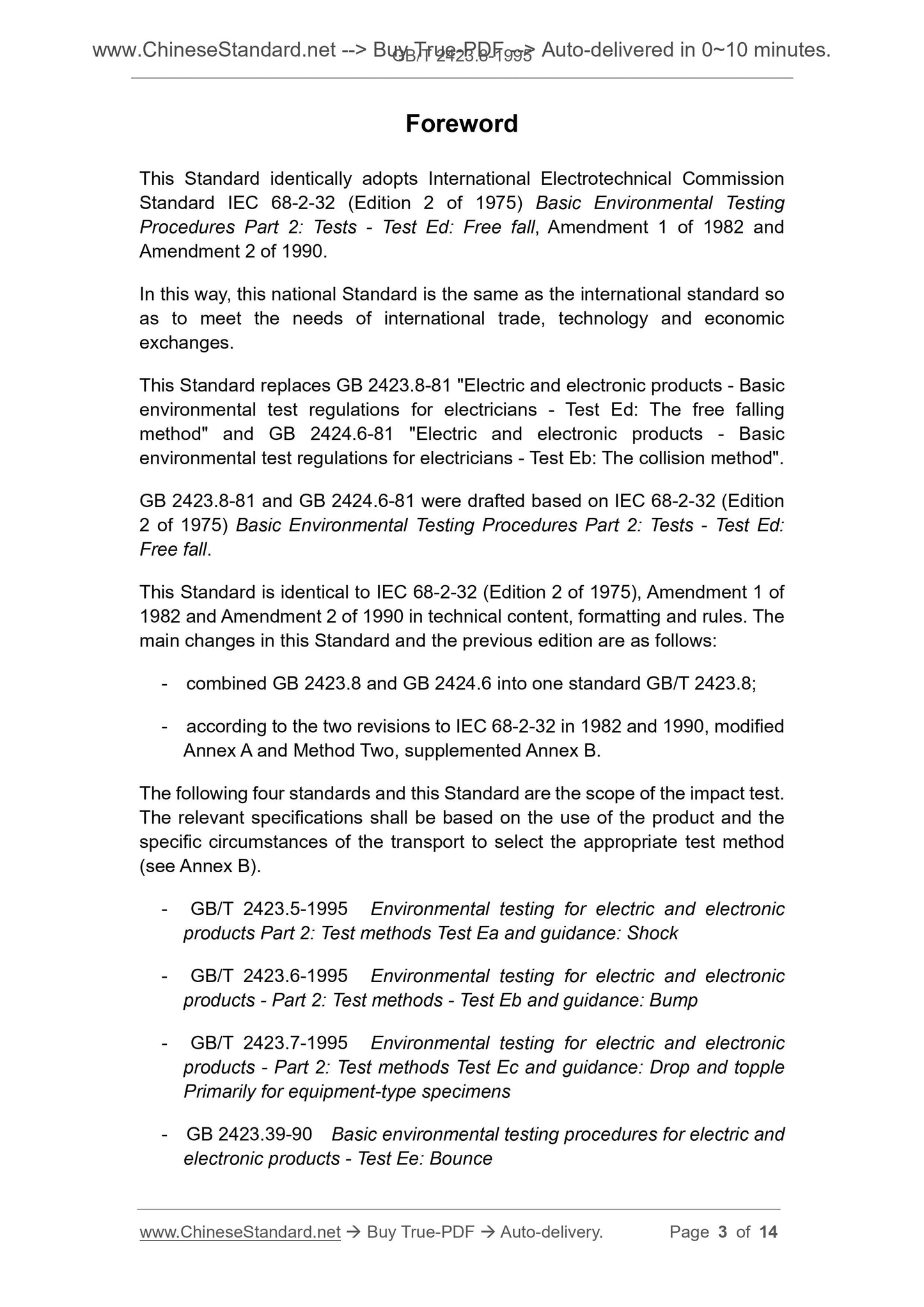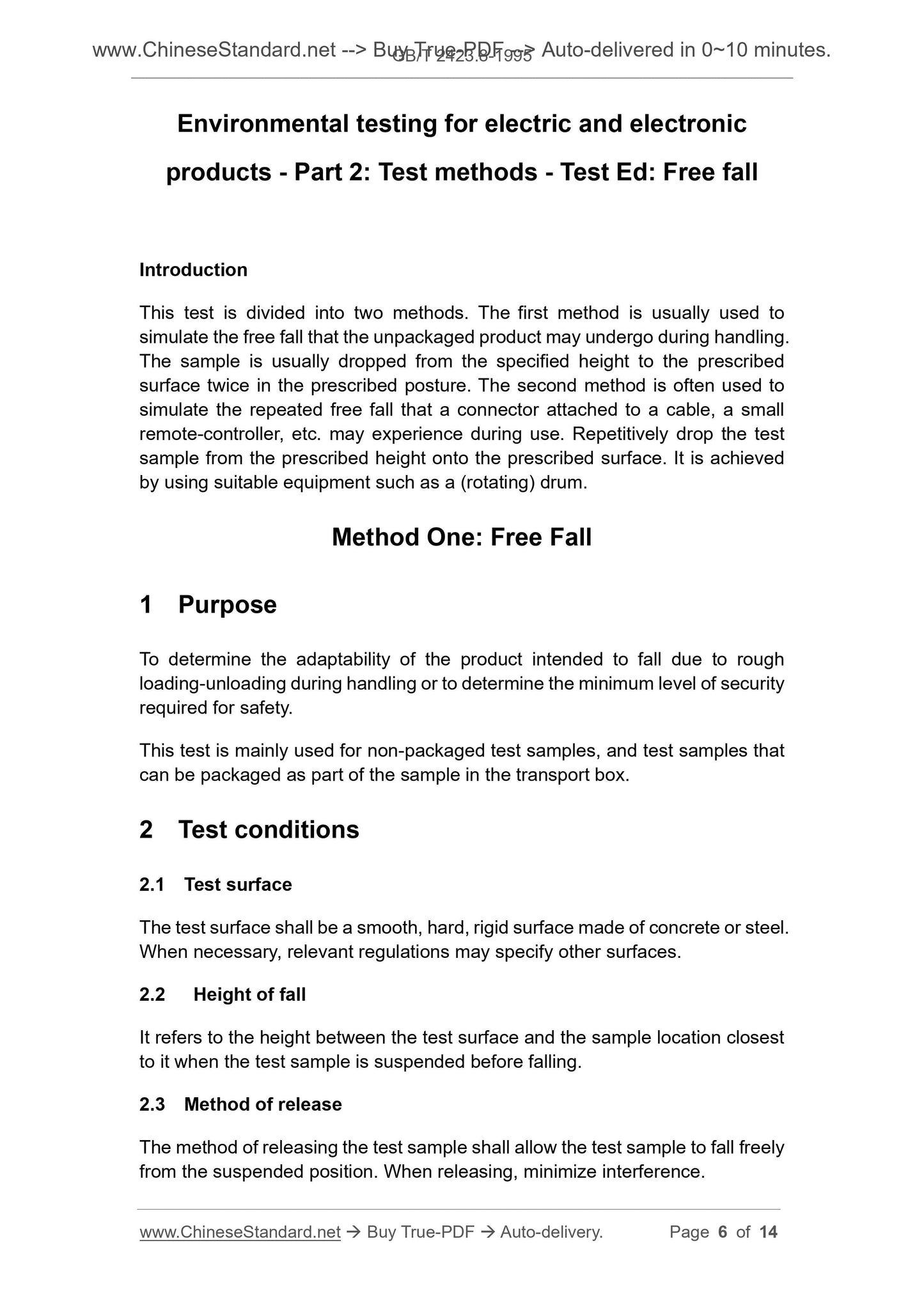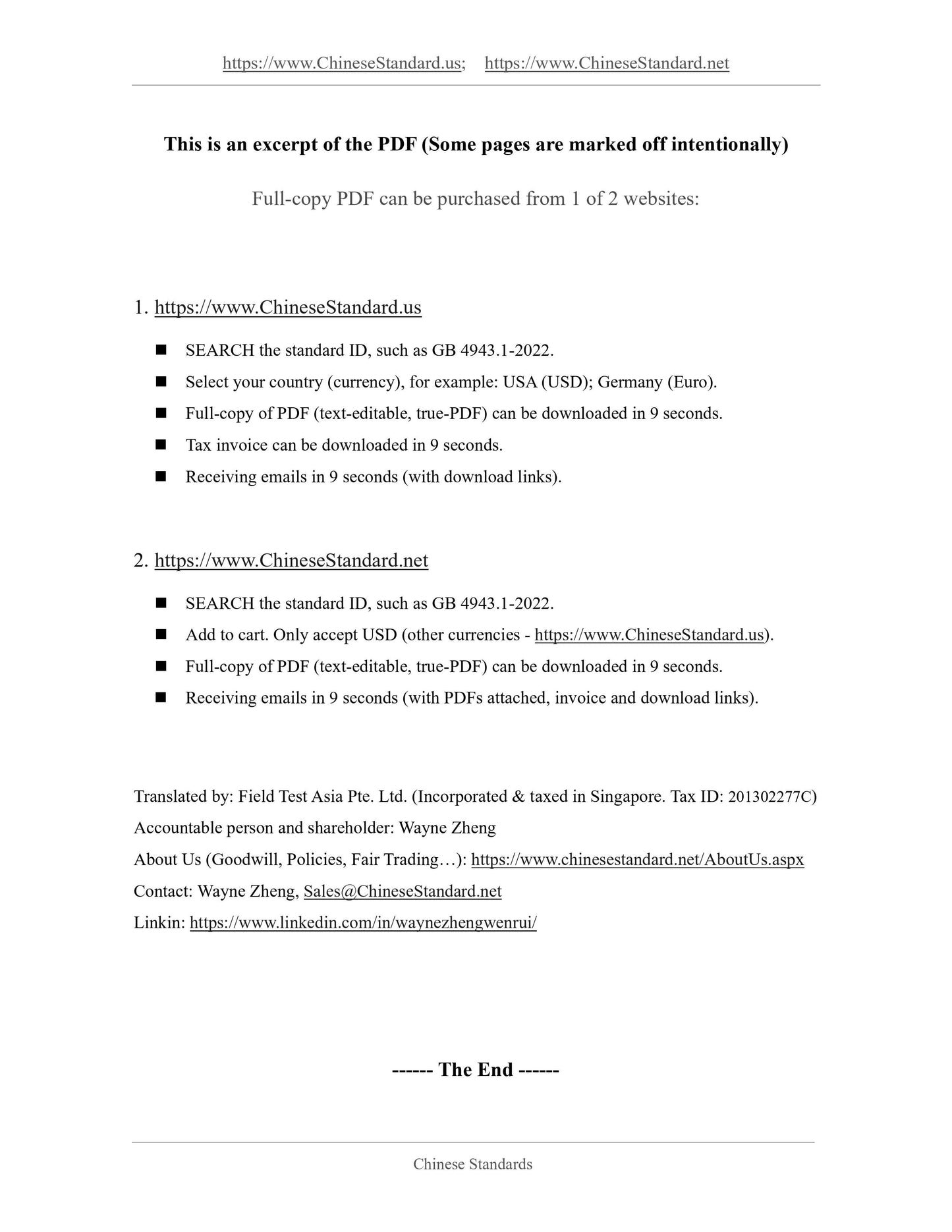1
/
of
5
www.ChineseStandard.us -- Field Test Asia Pte. Ltd.
GB/T 2423.8-1995 English PDF (GB/T2423.8-1995)
GB/T 2423.8-1995 English PDF (GB/T2423.8-1995)
Regular price
$145.00
Regular price
Sale price
$145.00
Unit price
/
per
Shipping calculated at checkout.
Couldn't load pickup availability
GB/T 2423.8-1995: Environmental testing for electric and electronic products - Part 2: Test methods - Test Ed: Free fall
Delivery: 9 seconds. Download (and Email) true-PDF + Invoice.Get Quotation: Click GB/T 2423.8-1995 (Self-service in 1-minute)
Newer / historical versions: GB/T 2423.8-1995
Preview True-PDF
Scope
To determine the adaptability of the product intended to fall due to roughloading-unloading during handling or to determine the minimum level of security
required for safety.
Basic Data
| Standard ID | GB/T 2423.8-1995 (GB/T2423.8-1995) |
| Description (Translated English) | Environmental testing for electric and electronic products. Parts 2: Test methods. Test Ed: Free fall |
| Sector / Industry | National Standard (Recommended) |
| Classification of Chinese Standard | K04 |
| Classification of International Standard | 19.04 |
| Word Count Estimation | 9,987 |
| Date of Issue | 8/29/1995 |
| Date of Implementation | 8/1/1996 |
| Older Standard (superseded by this standard) | GB 2423.8-1981; GB 2424.6-1981 |
| Adopted Standard | IEC 60068-2-32-1975, IDT; IEC 60068-2-32 AMD.1-1982, IDT; IEC 60068-2-32 AMD.2-1990, IDT |
| Issuing agency(ies) | State Bureau of Technical Supervision |
| Summary | This standard specifies two methods. The first method is typically used to simulate the state of a non-packaged product during transport may be by free fall on the sample typically falls in accordance with a predetermined posture to a predetermined height from the surface of predetermined two. The second method is usually used to simulate attached to the connector on the cable, mini remote control devices in use may be subjected to repeated free fall. The test sample dropped from the predetermined height to a predetermined repetition surface. It is through the use of suitable equipment, e. g., (rotating) drum to achieve. |
Share
